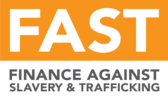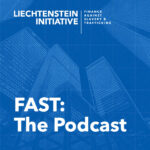In the first episode of Finance Against Slavery and Trafficking: The Podcast, we consider the financial logic of slavery. We’ll learn how debt is used to control trafficking victims. We will hear why some businesses treat workers as disposable, depreciating assets, more like machines than people. And we’ll hear about the implications of this financial logic for financial markets.
Guests in this episode include Dr Katarina Schwarz, Assistant Professor of Antislavery Law and Policy at the University of Nottingham and Associate Director at the Rights Lab; Professor Kevin Bales, Professor of Contemporary Slavery at the University of Nottingham; Timea Nagy, survivor leader, small business owner, and global anti-trafficking activist; and Fiona Reynolds, CEO of the UN-backed Principles for Responsible Investment and former Chair of the Financial Sector Commission on Modern Slavery and Human Trafficking.
Dr Schwarz describes the different legal provisions surrounding modern slavery around the world that allow the practice to continue, and Timea Nagy explains the real world impact that these provisions can have on a personal level. Professor Bales meanwhile discusses the evolving costs involved in slavery when workers are treated as disposable assets, and Fiona Reynolds explains the deep connection between slavery and financial practices and investments.


